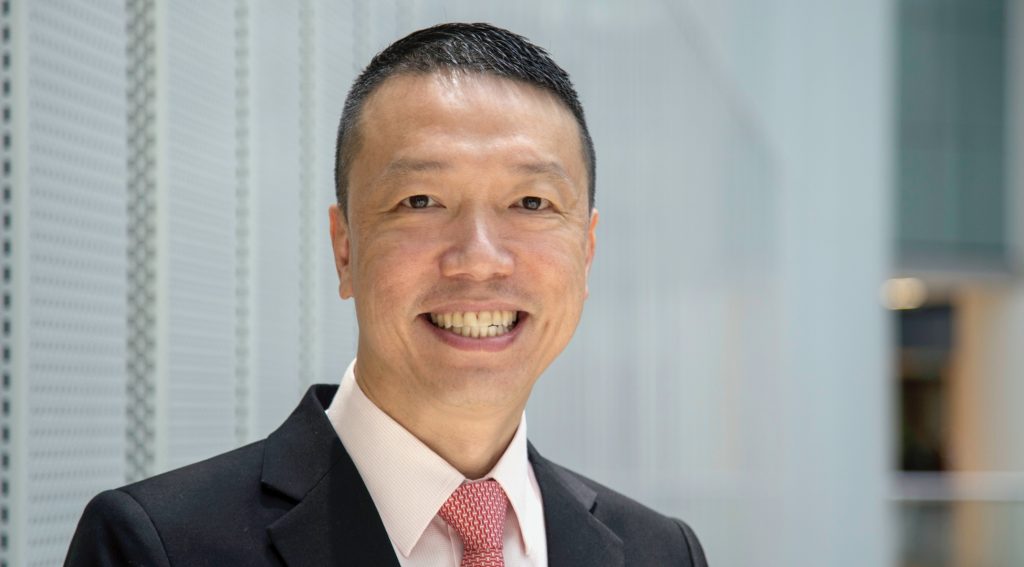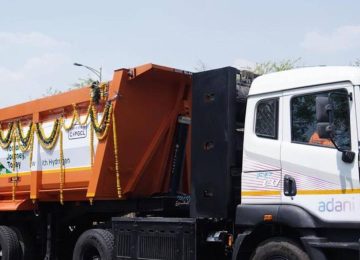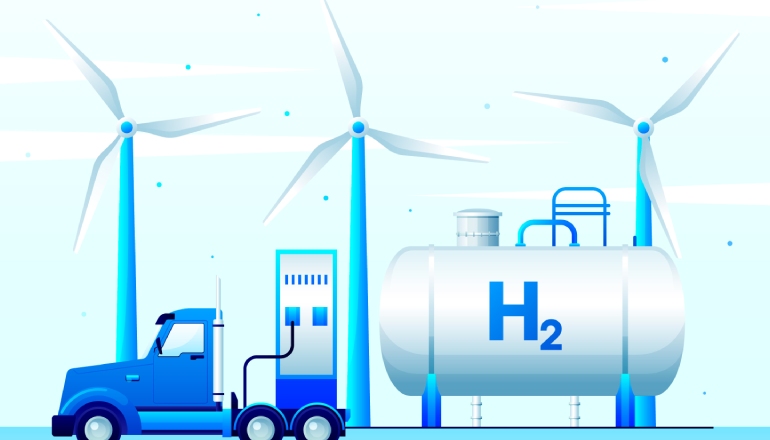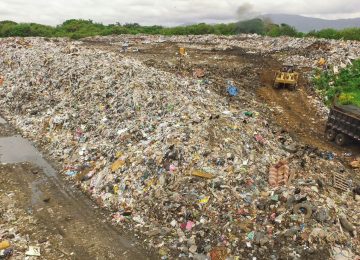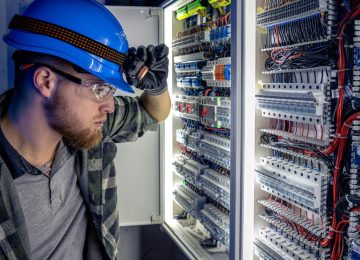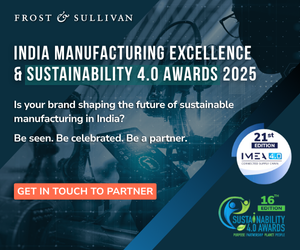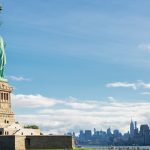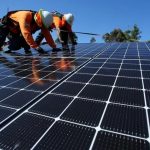Ken Lee, CEO, Asia Pacific, DHL Express, freewheelingly discusses the company’s four-pronged sustainability strategy, increased focus on SAF and the drive towards developing green supply chain, in an exclusive email interview with Renjini Liza Varghese, Chief News Editor, ESGNews.earth.
What are the updates on DHL’s mid-to-long term sustainability strategy, rooted in “Strategy 2030: Accelerate Sustainable Growth?
As announced in the Strategy 2030, the DHL Group has integrated sustainability into our existing strategic three bottom lines framework. We have recently added green logistics of choice as the fourth bottom line.
We continue to work towards our goal of achieving less than 29 million metric tons of greenhouse gas emissions by 2030 and net-zero by 2050. In 2024, the Group recorded 33.77 million metric tons of logistics-related emissions, while DHL Express logged about 15.46 million metric tons of emissions.
To intensify decarbonization efforts, we have formed several strategic partnerships and invested in electric vehicles and sustainable fuels. Between 2021 and 2024, our global electric vehicle fleet across the Group almost doubled from 21,431 to 42,004. In 2024, we increased the use of sustainable aviation fuels (SAF) in our own fleet to 3.5%, despite the continued relative low availability and high cost. This puts us well above the average for the logistics industry. Our goal is to achieve 30% sustainable aviation fuel usage in air transport by 2030.
Additionally, DHL Express has been actively driving usage of SAF through the agreements with Neste, bp, and World Energy. Recently, we signed a deal with Japanese company, Cosmo Oil Marketing to purchase 7.2 million liters of SAF. Our GoGreen Plus service allows customers to offset the carbon emissions of their international air shipments using procured SAF. Since the launch of GoGreen Plus in 2023, tens of thousands of customers have opted for this service in the Asia Pacific region.
The company had adopted the Green Logistics of Choice being the fourth pillar. How is it enabling its supply chain and value chain partners in obtaining its objectives?
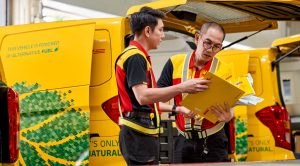
Given the scope of our operations and the variety of transport options we employ, we have spearheaded numerous projects in conjunction with our numerous partners, including suppliers and clients. For instance, GoGreen Plus service lets clients choose more sustainable shipping methods for their packages. Even if their shipments are not transported using sustainable fuels or vessels, the service’s “book & claim” system enables customers to lower their carbon footprint by using alternative technologies and sustainable fuels. This means that our clients can confidently assert the reduction in greenhouse gas emissions associated with their environmental reporting investment.
We take our customers’ transparent reporting very seriously. We are dedicated to providing clients with comprehensive data so they can monitor their greenhouse gas emissions. This includes standardized greenhouse gas emissions data that complies with international standards to help partners with their sustainability reporting initiatives.
Collaboration for innovation is key to making a meaningful difference in climate change. For this reason, we collaborate with clients and like-minded businesses to exchange best practices and jointly develop industry-leading solutions. It’s critical to keep pushing innovation and embracing new technologies in order to develop viable products and solutions that we can quickly adopt.
DHL has always been at the forefront to mitigate climate change. You were actively involved in COP29, with a focus on decarbonizing operations and promoting sustainable practices, including using sustainable aviation fuel and renewable diesel. With COP30 months away, how resolute you are in the follow-ups?
We are unquestionably steadfast in our commitment to our objectives. Low-emission logistics can significantly contribute to our decarbonization objectives, as decisive action is necessary to combat climate change. We increased our use of renewable energy by 9% between 2023 and 2024. In 2024, 10.3% of energy came from renewable sources. We take pride in the ongoing improvements we make to the way we use energy.
We have integrated sustainability more strongly into our strategic framework, when we are already pioneers in this area.
As we use our expertise to support customers in decarbonizing their supply chains. We are investing in energy-efficient technologies and carbon-neutral buildings, ensuring that our logistics solutions not only meet current demands but also align with long-term sustainability goals.
Contextually, DHL had set a target of >30% SAF blending in its Express and Global Forwarding businesses, electrifying 66% of our last-mile delivery vehicles and carbon neutral design to be used for all new buildings. Can you share the status quo?
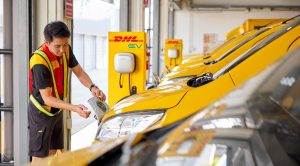
Currently, DHL leads the industry with the use of 14% of the world’s SAF in 2023, achieving a 3.2% ratio for our own aircraft, highest of any global airline. However, the availability of sustainable fuels and technologies remains limited and at very high cost. The demand for the product requires more effort from both suppliers and customers to demonstrate its demand.
DHL is focused on electrifying two-thirds of our pickup and delivery vehicles. Across the Group, we have gained ground with our EV fleet, which almost doubled from 2021 to 2024. At DHL Express, we have also been regularly adding EV to our Asia Pacific fleet. A most recent example is the introduction of 22 electric vans in the Philippines.
DHL has committed to carbon-neutral designs for all new buildings. We are implementing energy-efficient technologies and utilizing renewable energy at our facilities.
Some of the carbon-neutral additions include EV charging points, solar panels, smart meters, heat exchange technology, battery storage, LED lighting, as well as building and warehouse automation. Over 12,000 global sites, 60% are ISO-certified, and 95% of global electricity is sourced from renewable sources.
One of the major sustainability initiatives being talked about for DHL is its commitment to SAF. What kind of partnerships and technological advances are you considering to meet the objective?
SAF is currently the best option for reducing carbon emissions in aviation. However, while SAF production doubled, from 300 million litres in 2022 to 600 million in 2023, it is still less than 1% of global jet fuel use. The feedstock for SAF based on waste oils is also very limited, so it is important to work with partners to scale the production of second- and third-generation biofuels with alternative feedstocks.
In order to produce SAF at a scale that can compete economically with existing fossil fuels, producers need capital to invest in new production capacity. However, this needs support from many more customers to pay the price premiums necessary to fund these investments.
To further drive the transition to SAF and help fuel this movement, the Group is doubling down on partnerships with SAF producers, including World Energy, Neste, bp, Cosmo Oil Marketing, and Envision, and also with our customers.
Inland waterways are emerging as one of the most sustainable multimodal modes of transport and connectivity. DHL has an extensive global network. What are the operational and strategic ways the company is looking at to leverage the multimodal infrastructure for green transportation?
We recognize that a multimodal shipping solution can help us to optimize routes and reduce greenhouse gas emissions; and we are already using different modes of deliveries across the region.
While multimodal shipping is widely used in the supply chain industry to support business continuity, it has not been used primarily to reduce a company’s Scope 3 carbon emissions. DHL Global Forwarding has partnered with Schneider Electric to design and launch an industry-first multi-modal shipping model to reduce their environmental impact. By using a combination of air and sea transport, Schneider Electric has reduced its carbon emissions by 20%. We also provide multimodal transport utilizing rail and road networks in Europe.
Overall, DHL Group is committed to finding suitable and meaningful ways to improve our customers’ environmental footprint, including multimodal transport, electric vehicles, and SAF.
Social impact is one of the key pillars for DHL. The company has also earned carbon credits and enabled families in Africa…. Can you share more on carbon credits?
While we still ensure that we source offset credits from gold standard projects, our decarbonization agenda has been focusing on insetting within the transportation value chain directly.


